GLABRUM (Rose) Praeger, 1921
Synonyms :
Sedastrum glabrum Rose (1905)
Sedastrum palmeri Rose in sched. (s.a.)
Sedastrum turgidum Rose in sched. (s.a.)
Distribution : Mexico (Coahuila : Saltillo ; San Luis Potosi), ± 2000 m. However the distribution area may be much wider because plants are often confused with Sedum ebracteatum.
Description (by 't Hart & Bleij in IHSP, 2003) :
Glabrous perennial herbs with Sempervivum-like basal rosette.
Leaves imbricate, alternate, oblanceolate to spatulate-oblong, broadly apiculate, 20 - 35 mm; leaves on flowering branches oblong to ovate, very obtuse or shortly apiculate, shortly spurred, half-clasping, 10 - 30 mm; flowering branches erect or suberect, rather stout, densely leafy, 15 - 25 cm.
Inflorescences elongated panicles.
FIowers 5-merous, sessile, sepals broadly sessile, basally connate, slightly unequal, semiovate, obtuse, 2.5 - 3 mm, erect, petals almost free to the broad base, broadly ovate, obtuse, erose, shortly mucronate, white with purple lines, ± 4.5 mm, suberect
Cytology : 2n = 62, 124
Charles Uhl wrote : "Sedum glabrum occurs on rocks on the dry western side of the northern Sierra Madre Oriental and on the adjacent plateau in the states of Coahuila, San Luis Potosi and western Nuevo Leon of northeastern Mexico. It is similar to S. ebracteatum ... but its leaves are generally thicker and slightly glaucous, flat above and completely glabrous, and it grows in a drier habitat." (Rhodora 94, 1992)
S. glabrum and S. ebracteatum overlap in the wild. There are also hirsute forms of S. glabrum as well as glabrous forms of S. ebracteatum.
In habitat in Guerrero :
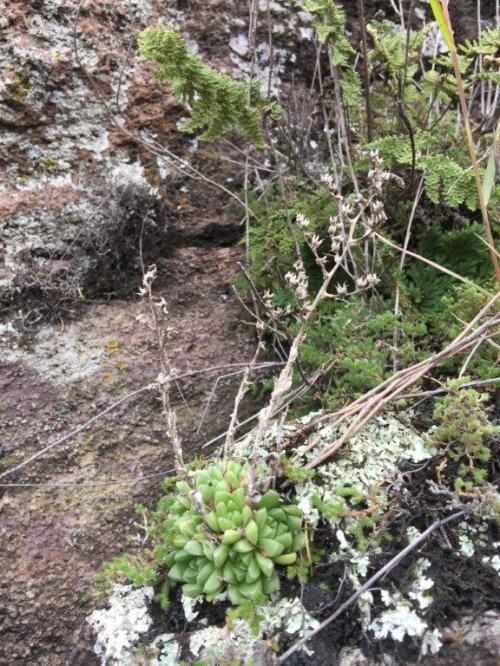
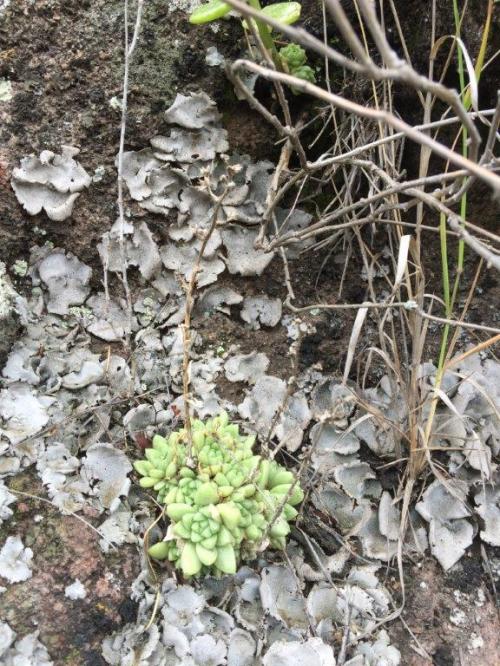
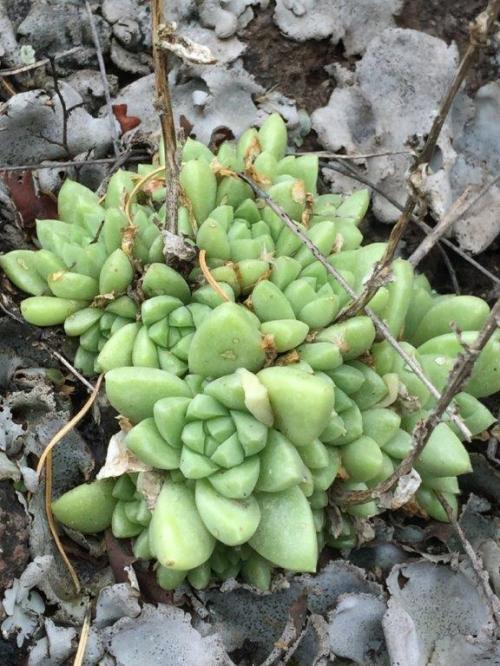
Photos Gerhard Köhres
In cultivation :
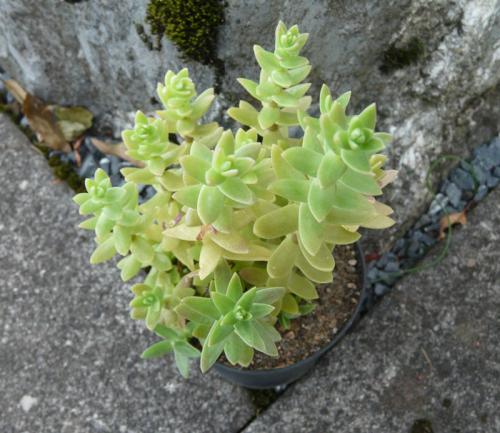
Photo Margrit Bischofberger

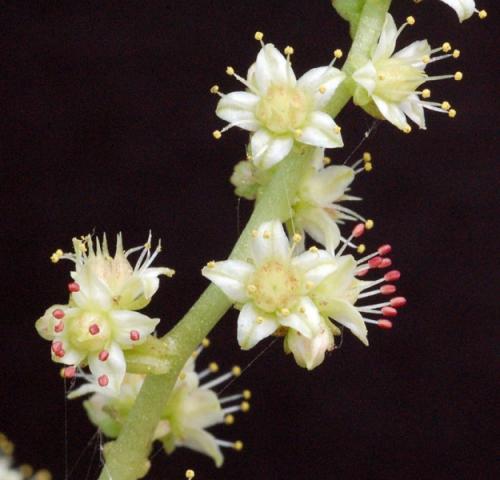
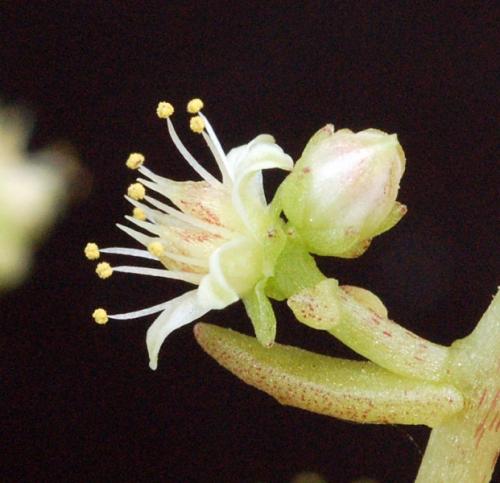
Photos Bernie DeChant